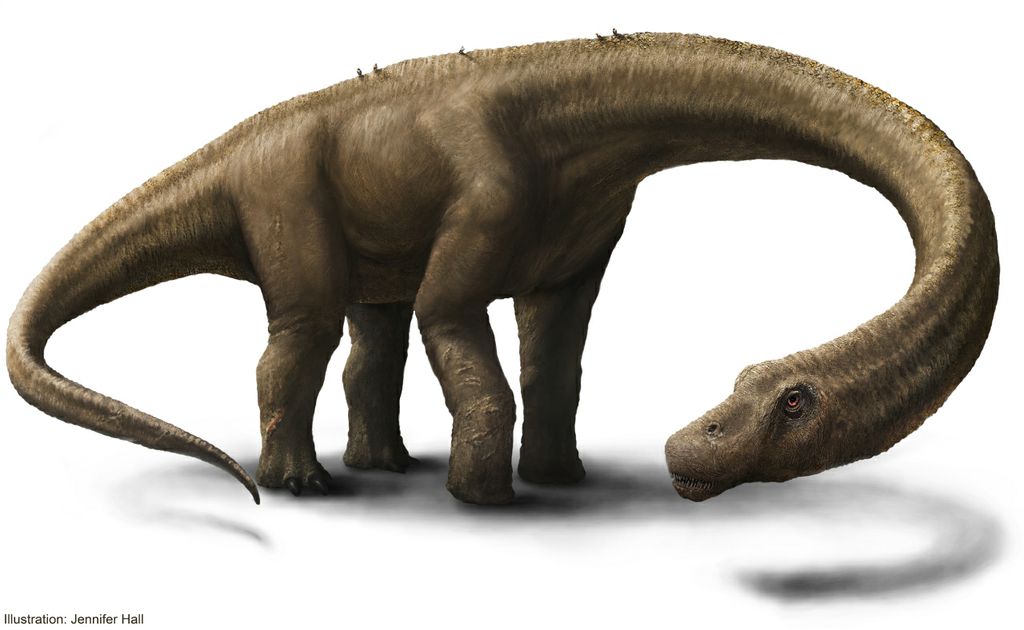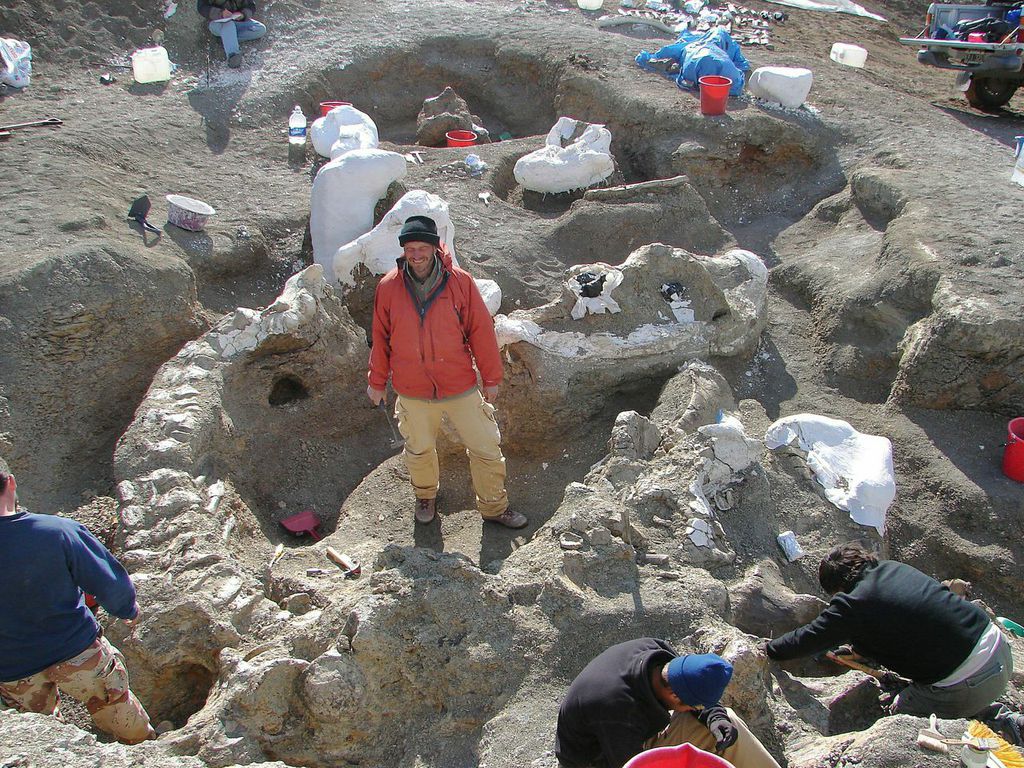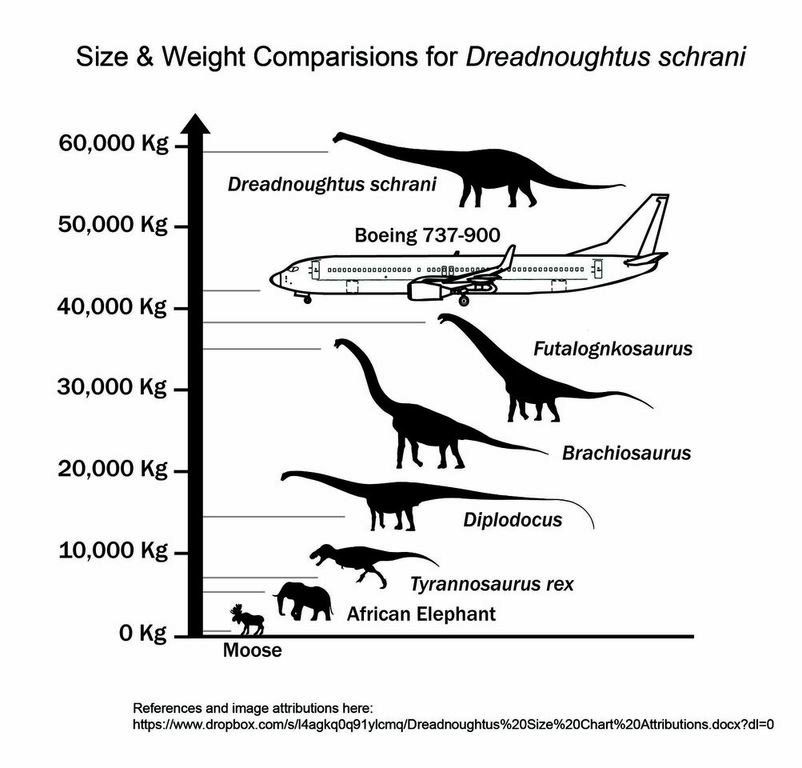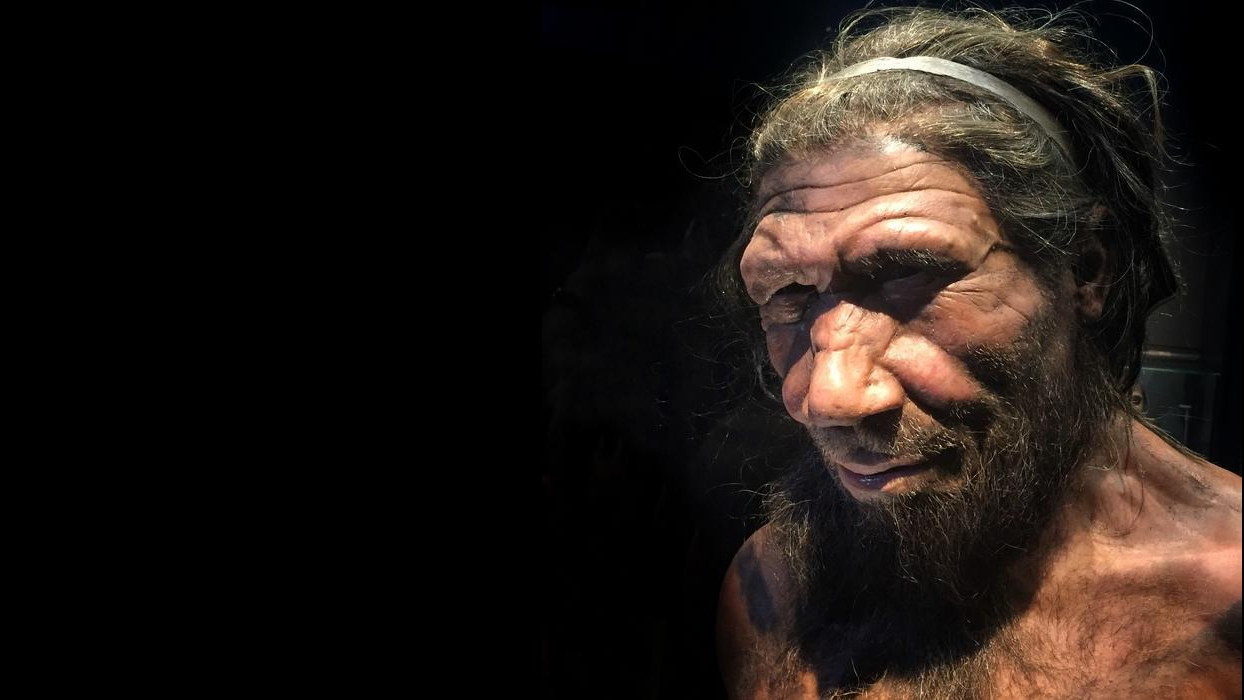Dreadnoughtus Dinosaur Weighed Whopping 65 Tons, Feared Nothing

A gargantuan, long-necked dinosaur as big as a two-story house and weighing as much as 12 elephants once stalked a flower-dotted earth some 77 million years ago in what is now Argentina.
That's where paleontologists discovered the beast's bones, naming it Dreadnoughtus schrani after steel warships. The dinosaur is a sauropod, a type of long-necked, four-legged dinosaur that only ate plants.
"I think the big herbivores don't get their due for being" intimidating, said study lead author Ken Lacovara, an associate professor of paleontology and geology at Drexel University in Philadelphia. "I thought it should have a fearsome name." [See Images of the Massive Dreadnoughtus Dinosaur and Dig]
Lacovara named the dinosaur after dreadnaughts, warships that were created in the early 20th century. "For a time, they were basically impervious to attack," Lacovara told Live Science. "I thought that Dreadnoughtus would be a good name for these dinosaurs, which does two things: It means 'fears nothing,' and this dinosaur would have had nothing to fear. It also connotes something big like a battleship."
The species name, schrani, honors Adam Schran, an Internet entrepreneur and financial supporter of the project.
The big dig
Lacovara stumbled across Dreadnoughtus in February 2005, when he unearthed a small patch of bones in Patagonia, which is in southern Argentina.
Get the world’s most fascinating discoveries delivered straight to your inbox.
"It turned into a 6-foot-plus-long [1.8 meters] femur, which was nice, but I kind of figured that this was going to be an isolated bone," Lacovara told Live Science. "And then we uncovered the tibia, and then we uncovered the fibula. By the end of the day, we had 10 bones exposed. And four years later, we had 145 bones exposed."
In fact, they had found two dinosaurs. The remains of the large Dreadnoughtus, the one the researchers examined in their new study, included 115 bones, and the smaller dinosaur's remains included 30 bones.
To the researchers' delight, much of the skeletons had stayed in place, revealing how the bones connected with one another. In many cases, dinosaur bones are found splayed apart, leaving much guesswork for paleontologists trying to piece the remains together, Lacovara said.
The researchers uncovered about 45 percent of the Dreadnoughtus' total skeleton and about 70 percent of the bones in its body, providing a rare glimpse of the anatomy and biomechanics of one of the largest dinosaurs to ever live. [Video: 'Astoundingly Huge' Dinosaur Discovered]

"To finally get to see what a really big sauropod looks like is fantastic," Steve Salisbury, a paleontologist from the University of Queensland in Brisbane, Australia, who was not involved in the study, told Live Science in an email. "Although we've known that there are a few really big sauropods out there, particularly among the titanosaurs [a group within sauropod dinosaurs], most have been known from fairly incomplete fossils."
These partial skeletons lead to speculative estimates about the animals' overall size and body proportions, Salisbury added. Before this new discovery, the most complete super-massive titanosaur fossil came from the Futalognkosaurus dukei, which was also discovered in Pategonia. These remains included about 15 percent of the animal's total skeleton and approximately 27 percent of the types of bones in its body, Lacovara said.
The new fossils, including a single, 2-inch-long (5 centimeters) tooth, are now in Lacovara's lab at Drexel University, on research loan from the Province of Santa Cruz, Argentina, which owns the dinosaur. The excavation team never found the dino's head, which would have been small and lightweight because it sat at the end of a 37-foot (11 m) neck.
"It's kind of a joke that sauropods don't have heads, because you almost never find a head," Lacovara said. "When they die, their heads pop off and you don't find them."
When the dinosaurs roamed
Dreadnoughtus lived about 77 million years ago, during the Late Cretaceous. The planet was likely warm and ice free, meaning that ocean levels were about 200 feet (61 m) above what they are today, Lacovara said. Flowering plants blossomed everywhere. [In Images: A Baby Dinosaur Unearthed]

Australia, Antarctica and South America were still connected during this period. In fact, fossils can help researchers piece together how the continents were joined together in the past. It's too difficult to dig for dinosaurs in the Antarctic ice, but Lacovara said he wonders if Dreadnoughtus fossils could be found in Australia — a project for another time, he said.
Still, complete skeletons of super-massive dinosaurs — those weighing 40 tons or more — are rarely found. At 65 tons, Dreadnoughtus is 85 feet (26 m) long, and two stories high at its shoulder. Estimates of the weight and length of other super-massive dinosaurs are typically based on only a handful of bones, the researchers said.
For example, estimates for the size of the Argentinosaurus, one of the largest dinosaurs on record, are based on just 13 of about 250 bones from its skeleton, Lacovara said.
He speculates that the two Dreadnoughtus dinosaurs found in Argentina died when a river flooded after suddenly breaking through a natural levee. This would have turned the ground into a soupy mess of sand and water, and led to the rapid burial of the dinosaurs.
"This needs to happen before the bones are heavily scavenged and/or break down naturally," Salisbury said. "I suspect that in most instances, the carcasses of some of the larger sauropods were just so big that unless they were in the right place at the right time, their carcasses were probably heavily scavenged, and in most instances, large parts of the skeleton probably never got preserved,"
The large Dreadnoughtus dinosaur has a few tooth marks on its vertebra, likely from a meat-eating scavenger that chewed on the dinosaur around the time of its death, the researchers said.
"If you put 65 tons of meat on the table, some scavengers are going to show up," Lacovara said. "We have some teeth of the meat[-eating] dinosaurs. They typically lose teeth as they feed."
"But," he added, "it's not the kind of injury that would kill Dreadnoughtus. It looks like something you would put a Band-Aid on."
Further analysis of the bones suggests that the large Dreadnoughtus was not yet fully grown. The shoulder bones are not fused together as they would be in a mature adult, and a section of the fossils show that the animal's bone-growing cells look like that of a youthful individual, Lacovara said.
The team did a "great" job examining the bones — which they scanned into 3D PDF files that are available to the public — and fitting them into the dinosaur family tree, said Patrick O'Connor, professor of anatomy at Ohio University in Athens, Ohio
"Many people are going to be very excited to see a dinosaur this complete coming out," O'Connor said. "A lot of times, we'll have a dinosaur based on a humerus or a couple parts of a vertebrae. This is a great because it's a lot of material to work with."
The study was published today (Sept. 4) in the journal Scientific Reports.
Follow Laura Geggel on Twitter @LauraGeggel and Google+. Follow Live Science @livescience, Facebook & Google+. Original article on Live Science.

Laura is the archaeology and Life's Little Mysteries editor at Live Science. She also reports on general science, including paleontology. Her work has appeared in The New York Times, Scholastic, Popular Science and Spectrum, a site on autism research. She has won multiple awards from the Society of Professional Journalists and the Washington Newspaper Publishers Association for her reporting at a weekly newspaper near Seattle. Laura holds a bachelor's degree in English literature and psychology from Washington University in St. Louis and a master's degree in science writing from NYU.
